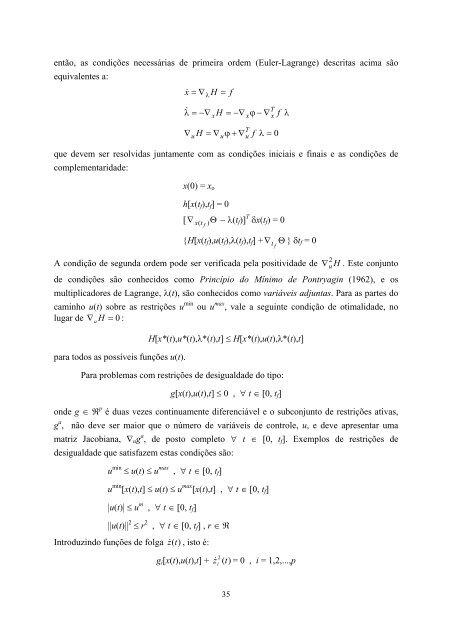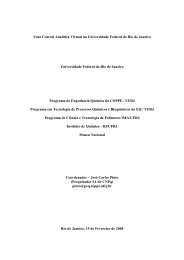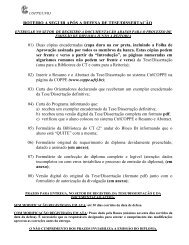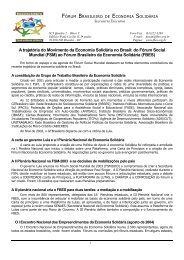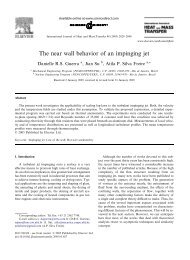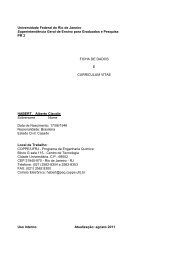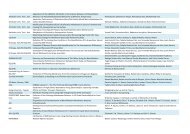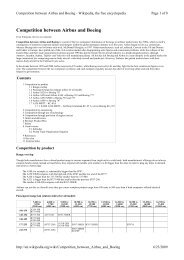CapÃtulo 10 - Programa de Engenharia QuÃmica - COPPE / UFRJ
CapÃtulo 10 - Programa de Engenharia QuÃmica - COPPE / UFRJ
CapÃtulo 10 - Programa de Engenharia QuÃmica - COPPE / UFRJ
Create successful ePaper yourself
Turn your PDF publications into a flip-book with our unique Google optimized e-Paper software.
então, as condições necessárias <strong>de</strong> primeira or<strong>de</strong>m (Euler-Lagrange) <strong>de</strong>scritas acima sãoequivalentes a:x H fxH x Txf uH u Tuf 0que <strong>de</strong>vem ser resolvidas juntamente com as condições iniciais e finais e as condições <strong>de</strong>complementarida<strong>de</strong>:x(0) = x oh[x(t f ),t f ] = 0[ x t (t f )] T x(t f ) = 0 )( f{H[x(t f ),u(t f ),(t f ),t f ] + ft } t f = 0A condição <strong>de</strong> segunda or<strong>de</strong>m po<strong>de</strong> ser verificada pela positivida<strong>de</strong> <strong>de</strong> 2 u H . Este conjunto<strong>de</strong> condições são conhecidos como Princípio do Mínimo <strong>de</strong> Pontryagin (1962), e osmultiplicadores <strong>de</strong> Lagrange, (t), são conhecidos como variáveis adjuntas. Para as partes docaminho u(t) sobre as restrições u min ou u max , vale a seguinte condição <strong>de</strong> otimalida<strong>de</strong>, nolugar <strong>de</strong> H 0 :upara todos as possíveis funções u(t).H[x*(t),u*(t),*(t),t] H[x*(t),u(t),*(t),t]Para problemas com restrições <strong>de</strong> <strong>de</strong>sigualda<strong>de</strong> do tipo:g[x(t),u(t),t] 0 , t [0, t f ]on<strong>de</strong> g p é duas vezes continuamente diferenciável e o subconjunto <strong>de</strong> restrições ativas,g a , não <strong>de</strong>ve ser maior que o número <strong>de</strong> variáveis <strong>de</strong> controle, u, e <strong>de</strong>ve apresentar umamatriz Jacobiana, u g a , <strong>de</strong> posto completo t [0, t f ]. Exemplos <strong>de</strong> restrições <strong>de</strong><strong>de</strong>sigualda<strong>de</strong> que satisfazem estas condições são:u min u(t) u max , t [0, t f ]u min [x(t),t] u(t) u max [x(t),t] , t [0, t f ]|u(t)| u m , t [0, t f ]||u(t)|| 2 r 2, t [0, t f ] , r Introduzindo funções <strong>de</strong> folga z(t) , isto é:g i [x(t),u(t),t] + ( ) = 0 , i = 1,2,...,pz 2 it35


